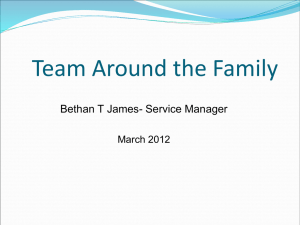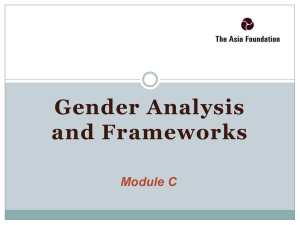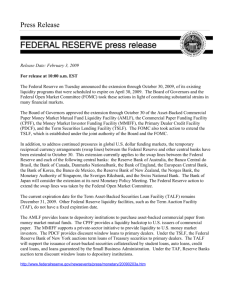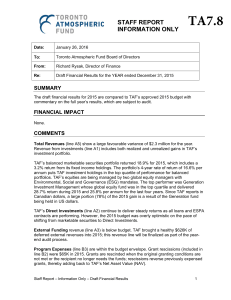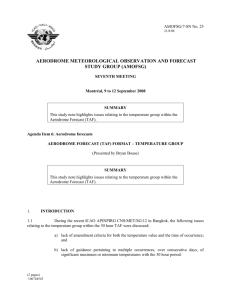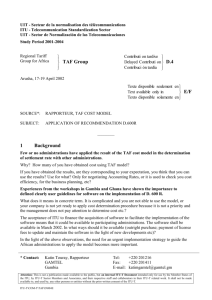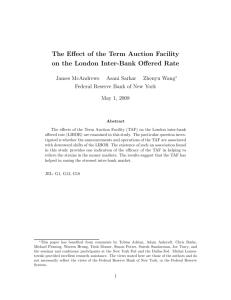Another Window: The Term Auction Facility
advertisement
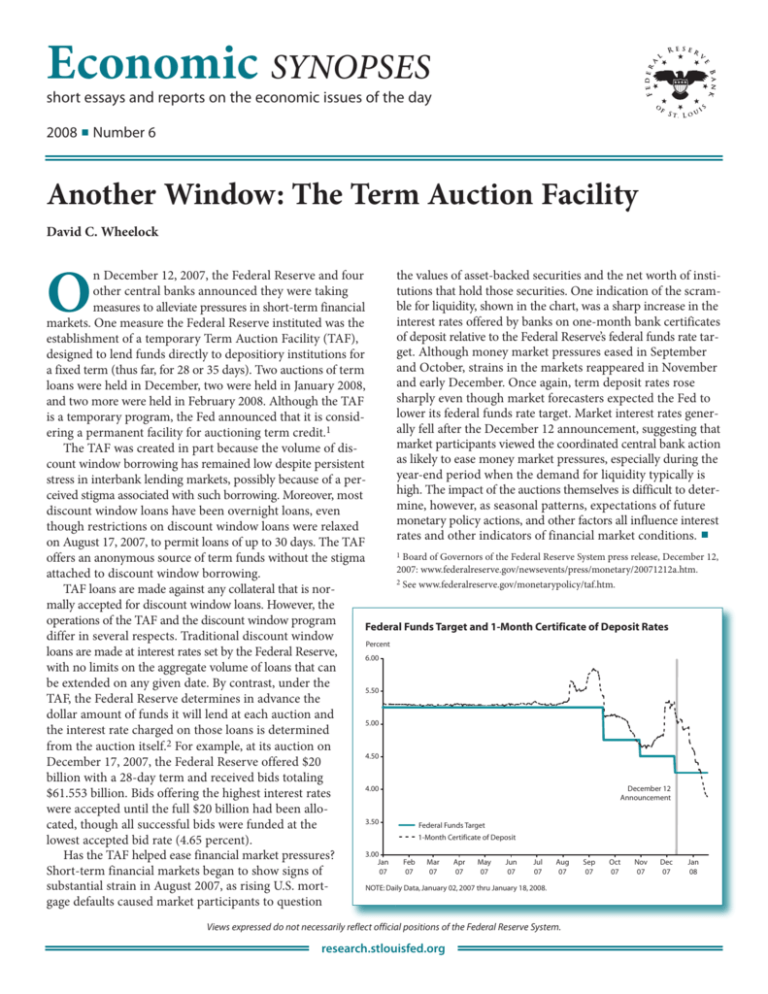
Economic SYNOPSES short essays and reports on the economic issues of the day 2008 ■ Number 6 Another Window: The Term Auction Facility David C. Wheelock O the values of asset-backed securities and the net worth of instin December 12, 2007, the Federal Reserve and four tutions that hold those securities. One indication of the scramother central banks announced they were taking ble for liquidity, shown in the chart, was a sharp increase in the measures to alleviate pressures in short-term financial interest rates offered by banks on one-month bank certificates markets. One measure the Federal Reserve instituted was the of deposit relative to the Federal Reserve’s federal funds rate tarestablishment of a temporary Term Auction Facility (TAF), get. Although money market pressures eased in September designed to lend funds directly to depositiory institutions for and October, strains in the markets reappeared in November a fixed term (thus far, for 28 or 35 days). Two auctions of term and early December. Once again, term deposit rates rose loans were held in December, two were held in January 2008, sharply even though market forecasters expected the Fed to and two more were held in February 2008. Although the TAF lower its federal funds rate target. Market interest rates generis a temporary program, the Fed announced that it is considally fell after the December 12 announcement, suggesting that 1 ering a permanent facility for auctioning term credit. market participants viewed the coordinated central bank action The TAF was created in part because the volume of disas likely to ease money market pressures, especially during the count window borrowing has remained low despite persistent year-end period when the demand for liquidity typically is stress in interbank lending markets, possibly because of a perhigh. The impact of the auctions themselves is difficult to deterceived stigma associated with such borrowing. Moreover, most mine, however, as seasonal patterns, expectations of future discount window loans have been overnight loans, even monetary policy actions, and other factors all influence interest though restrictions on discount window loans were relaxed rates and other indicators of financial market conditions. ■ on August 17, 2007, to permit loans of up to 30 days. The TAF 1 Board of Governors of the Federal Reserve System press release, December 12, offers an anonymous source of term funds without the stigma 2007: www.federalreserve.gov/newsevents/press/monetary/20071212a.htm. attached to discount window borrowing. 2 See www.federalreserve.gov/monetarypolicy/taf.htm. TAF loans are made against any collateral that is normally accepted for discount window loans. However, the operations of the TAF and the discount window program Federal Funds Target and 1-Month Certificate of Deposit Rates differ in several respects. Traditional discount window Percent loans are made at interest rates set by the Federal Reserve, 6.00 with no limits on the aggregate volume of loans that can be extended on any given date. By contrast, under the 5.50 TAF, the Federal Reserve determines in advance the dollar amount of funds it will lend at each auction and 5.00 the interest rate charged on those loans is determined from the auction itself.2 For example, at its auction on 4.50 December 17, 2007, the Federal Reserve offered $20 billion with a 28-day term and received bids totaling December 12 4.00 $61.553 billion. Bids offering the highest interest rates Announcement were accepted until the full $20 billion had been allo3.50 Federal Funds Target cated, though all successful bids were funded at the 1-Month Certificate of Deposit lowest accepted bid rate (4.65 percent). 3.00 Has the TAF helped ease financial market pressures? Jan Feb Mar Apr May Jun Jul Aug Sep Oct Nov Dec Jan 07 07 07 07 07 07 07 07 07 07 07 07 08 Short-term financial markets began to show signs of substantial strain in August 2007, as rising U.S. mortNOTE: Daily Data, January 02, 2007 thru January 18, 2008. gage defaults caused market participants to question Views expressed do not necessarily reflect official positions of the Federal Reserve System. research.stlouisfed.org


